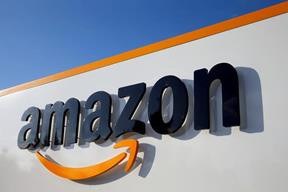Amazon is now taking serious strides towards its offline operations. Ever since its largest acquisition in company history - purchasing Whole Foods for $13.7 billion in 2017 - Amazon has never embarked on such a comprehensive overhaul of its food and sundry goods business.
On Wednesday, August 2nd, Eastern Time, it was reported that Amazon will roll out these substantial reforms in the coming weeks and months. These changes will encompass the transformation of retail stores, testing new highly automated warehouses, and, for the first time, providing fresh food delivery to customers who haven't subscribed to the Prime service.
Reports indicate that Amazon also plans to consolidate various e-commerce supermarkets, including Whole Foods, Amazon Fresh, and Amazon.com, all into one online shopping cart for customers.
Other outlets reported that Amazon has begun grocery delivery for non-Prime members in more than a dozen major American cities, including San Francisco, Boston, and Austin, Texas. Previously, only Prime members, who pay an annual fee of $139, could order sundry goods from Amazon Fresh stores and warehouses. Now, regular customers can also place orders. If the total order amount is less than $50, Amazon will charge a shipping fee of $13.95. For orders between $50 and $100, the shipping fee is $10.95, and for orders over $100, the fee is $7.95.
Some outlets claim that Amazon plans to expand the above delivery service nationwide by the end of this year, eventually including Whole Foods and other physical stores that sell sundry goods.
The media also reported that Amazon has appointed a group of executives from traditional retailers to help push the reforms. Leading the overhaul is Tony Hoggett, a former executive at Tesco, the UK's largest supermarket chain.
Public records show that before joining Amazon, Hoggett worked for Tesco for 31 years, serving as Tesco's Chief Operating Officer from July 2018 to May 2021, and as Tesco's Chief Strategy and Innovation Officer from April to July 2021. Since January 2022, he has been serving as the Senior Vice President of Amazon's global physical stores and specialized delivery.
While Amazon's e-commerce business dominates in the United States, it's still not a contender for the two giants in the offline grocery market, Walmart and Kroger. This reform is Amazon's latest move to seize more offline market share.
UBS analysts estimate that the U.S. grocery market is worth $1.5 trillion, with Walmart alone occupying 22.3% of the market share, Kroger holding 9.9%, far exceeding Costco in third place. Costco and Albertsons, following closely behind, hold 5.8% and 5.2% respectively, while Amazon's Whole Foods holds 4.4%, ranking fifth.
In February of this year, a Wall Street article mentioned Amazon's plans to make a significant push offline. The article pointed out that analysts believe that acquiring Whole Foods did not lay a solid foundation for Amazon's grocery strategy. Amazon's plan to open more than 200 fresh food stores has only been implemented in a few dozen locations, and some of the originally scheduled U.S. stores are still vacant.
In February, Amazon revealed that it paused the expansion of Amazon Fresh in the fourth quarter of last year and closed some stores with "low growth potential," hence recognizing a $720 million impairment charge for the quarter.
However, Amazon CEO Andy Jassy stated in February that Amazon is prepared to heavily develop physical stores, attributing previous expansion errors to the abnormal circumstances during the COVID-19 pandemic. He said that Amazon's physical stores are still in their early stages, and that this year will be marked by a major push in this area.






